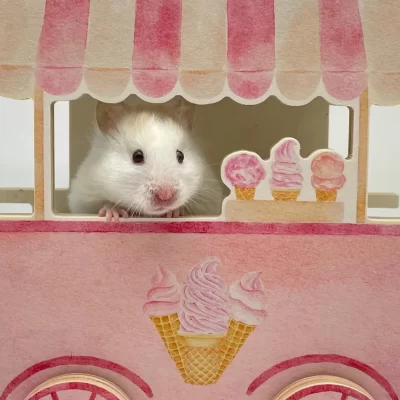Desert Gardens
Plan before planting, Brian Kissinger tells me, a near-reflexive response developed after decades creating gardens for Phoenix’s rich and famous.
Currently serving as the director of horticulture for Desert Botanical Garden, Kissinger takes me for an early morning walk through its lush pathways. I want to know more about bringing life to our backyards when even lizards are hiding from the heat.
As Kissinger describes projects being undertaken by the Garden, it quickly becomes clear that many of our home plant-scaping projects are woefully under-utilizing the desert’s potential. For all our homes’ unique luxuries, from exquisite kitchens to palatial bathrooms to captivating theaters, the opportunities for customization outside the home are perhaps even more unlimited. And yet they can easily go overlooked or under utilized.
Fortunately, compared to the rest of the world, metro Phoenix occupies a unique place in one of the planet’s most unique deserts. Ray Keimkuehler, a Garden horticulturalist, explains that in addition to being one of the “wettest” deserts in the world, Phoenix’s location in the Sonoran Desert places it at a true crossroads for plant biodiversity. The high desert to the north of Phoenix, the Mojave, the Chihuahua and Sonoran deserts all come together in Arizona, making for an incredibly diverse native plant selection.

Old Man Cactus
And it only takes one trip through the Garden to discover just how diverse one’s own backyard could be. Of course there are the familiar saguaros, ocotillos and creosotes. Palo verdes are mixed in with mesquites. And although it wouldn’t be the Sonoran without them (in fact, the Sonoran is the only desert in the world where you’ll find our iconic saguaro), there are scores of plants and cacti that look absolutely otherworldly. An example is the Creeping Devil Cactus, eerily draping around the trunk of a tree and named much more appropriately than the not-at-all-cuddly Teddy Bear Cholla. An Old Man Cactus overlooks them both with its remarkably fuzzy white “beard,” having grown thick and thorny and looking wise beyond its years.
Kissinger explains that in addition to showcasing thousands of unique plants, the Garden is taking a hands-on approach with its Center for Desert Living. Scheduled to open this fall as part of a massive renovation project, the center will showcase the “useful” side of desert plant life. However, as two Walt Danley real-estate agents and a growing number of clients already seem to know, the desert is a surprisingly well-suited place for your own gourmet garden.
Gardening at home
Transforming her Biltmore area backyard into a fruit and vegetable garden, Karen Pratte is presently growing several types of citrus trees and a half dozen herbs and says she is constantly experimenting with different vegetables. A few box beds and a small corner in her villa’s patio were all it took to get started.
“There’s nothing like being able to step outside to grab a jalapeño right off the bush for a morning omelet,” she said. “Or fresh fruit juice. The difference between what you grow and what you can buy is just immeasurable.”
She shows off fresh looking radishes, then tells me they were picked weeks ago. “You bring something home from the grocery store and it might last you a week, if you’re lucky. Who knows where it has been and for how long? The quality just doesn’t even compare.”

Pratte’s garden suits the eyes as well as the palate, with a more decorative design for the front courtyard. However, bright orange kumquats work as tasty, colorful accents. Ivy climbs an archway, creating a green, romantic hideaway out of an otherwise standard patio.
A few miles from the Biltmore in Arcadia, Libby Cohen maintains a home garden that has fed her family of four since they moved in eight years ago.
“It was one of the selling features of the house when we bought it,” she explains. “The raised beds and irrigation systems were already in place and made it very easy to continue right where they left off.”

Cohen takes full advantage of her space with a six-bed garden. “Right now we have beets, leeks, lettuce of all varieties, broccoli, cauliflower, fava beans and sugar snap peas. That’s just in the colder months,” Cohen says. “We recently planted tomatoes, peppers, and squash, along with basil and other herbs, which grow best in the warmer months. Plus all the citrus.”
She echoes Pratte’s sentiment on having the freshest possible food and shows off a chicken coop with four chickens producing eggs daily.
“If I could do anything differently, it would be to give myself more time to work outside. It is so relaxing, and the rewards go beyond just having great food.”
Horticultural research
Back at the Botanical Garden, horticulturalists have been working with university researchers to develop plants better suited to the wide-ranging climate in Phoenix. Even the occasional light frost can be fatal to some plants, while scorching summers will destroy others.
One relatively recent hybridization is the Mexicola, which Kissinger describes as an avocado capable of withstanding a Phoenix summer. Traditional avocados are notoriously difficult to grow here. The Mexicolas have taken off exceptionally well, and Kissinger shows me a photograph of a prized specimen nearly one-and-a-half stories tall in Gilbert. “They taste the same, Mexicolas and avocados,” he says.
In your own garden, he suggests planting a minimum of 30 percent native Sonoran plants. One reason is that they are already accustomed to their home turf and will be easier to maintain. Keimkuehler recommends looking at “sister climates,” which are climates similar to our own but with completely different plant life.
The pomegranate is an excellent sister climate option to consider, he says. The tremendously popular fruit, found in everything from jams to cocktails, is originally from the Middle East where its desert climate is much like our own. “Even though it’s from the other side of the world, pomegranate grows well here and is packed with flavor and nutritional benefits.”
“People shouldn’t be afraid to take risks,” Kissinger adds. “Really, what’s the worst thing that could happen?”
Story and images courtesy Kevin Greaney – Walt Danley Realty






